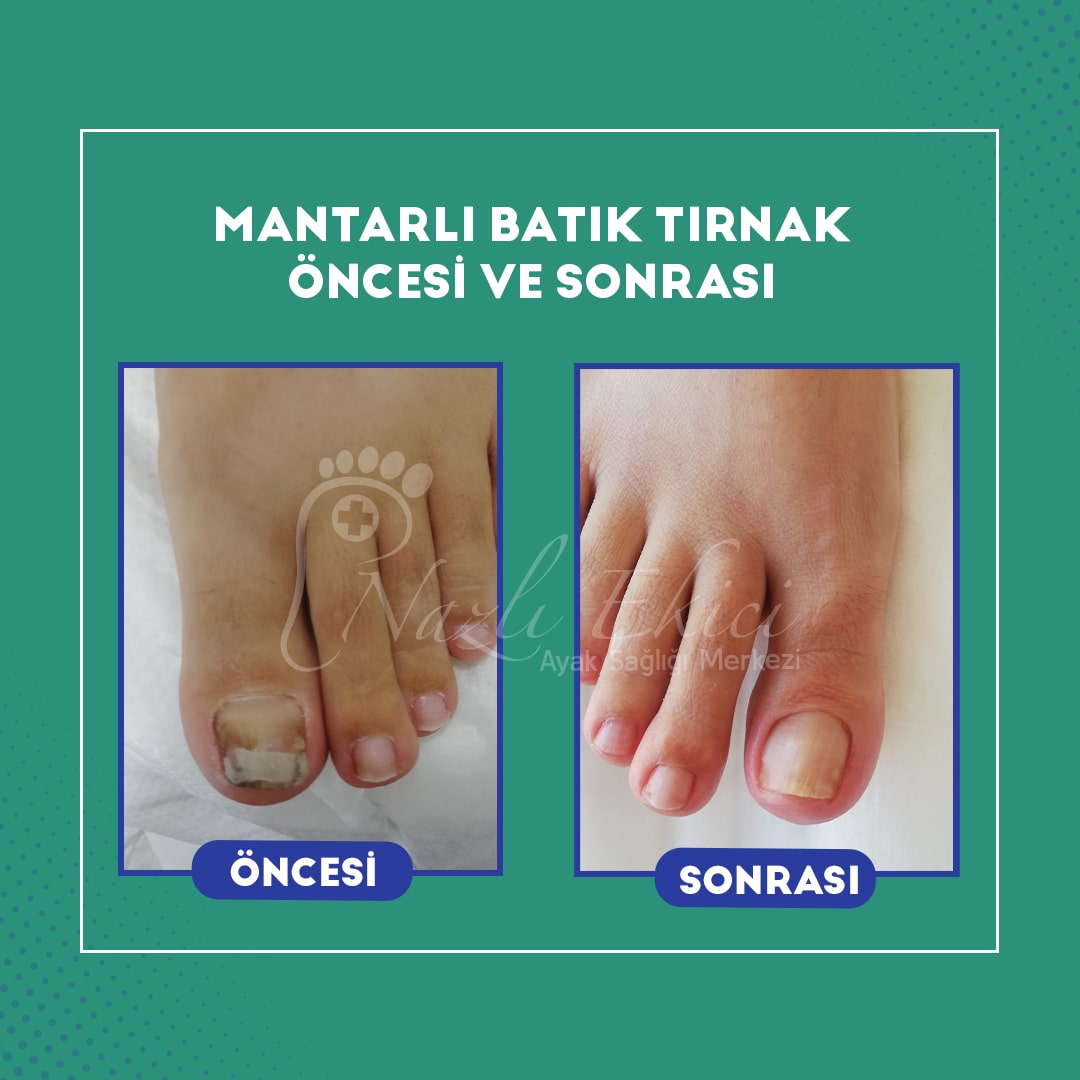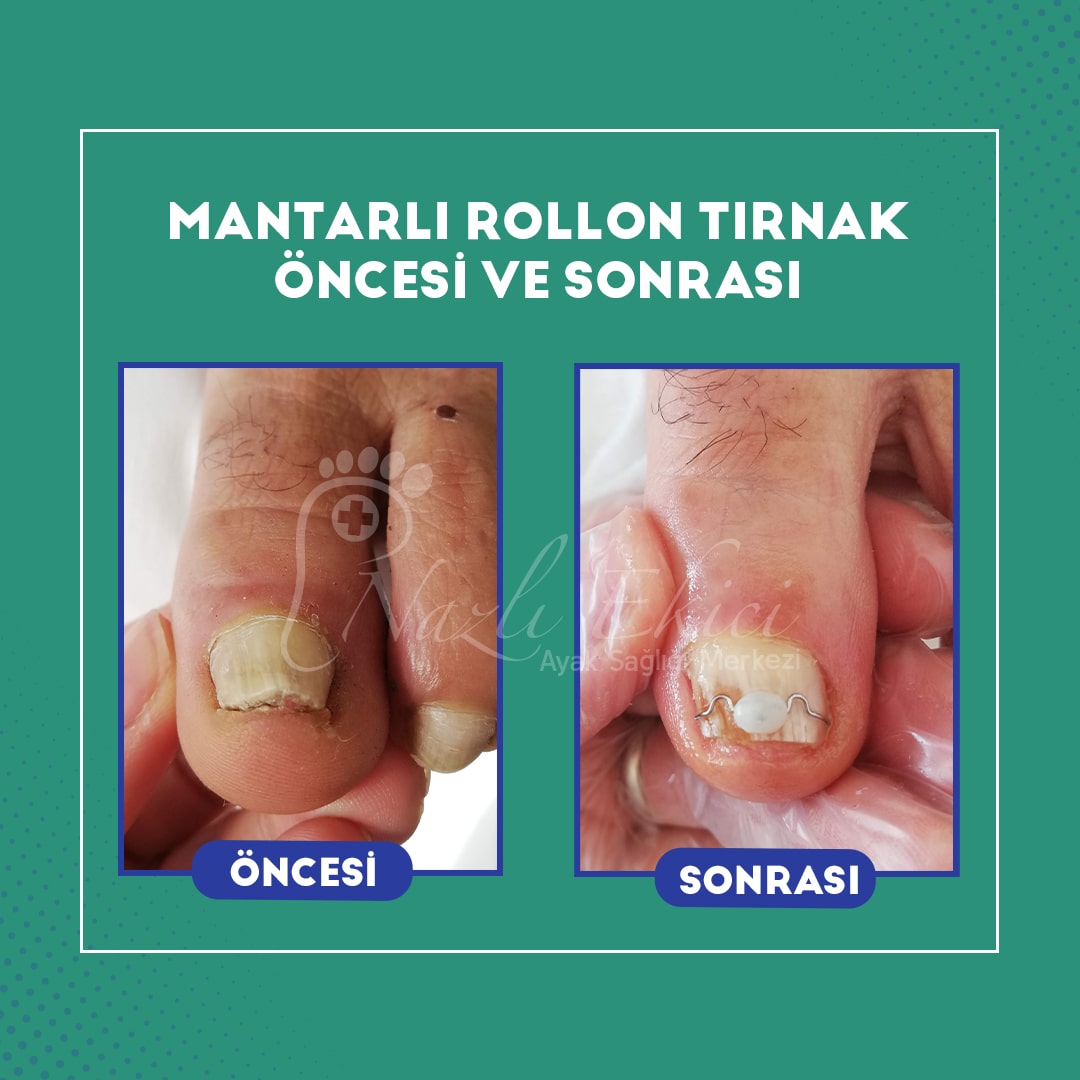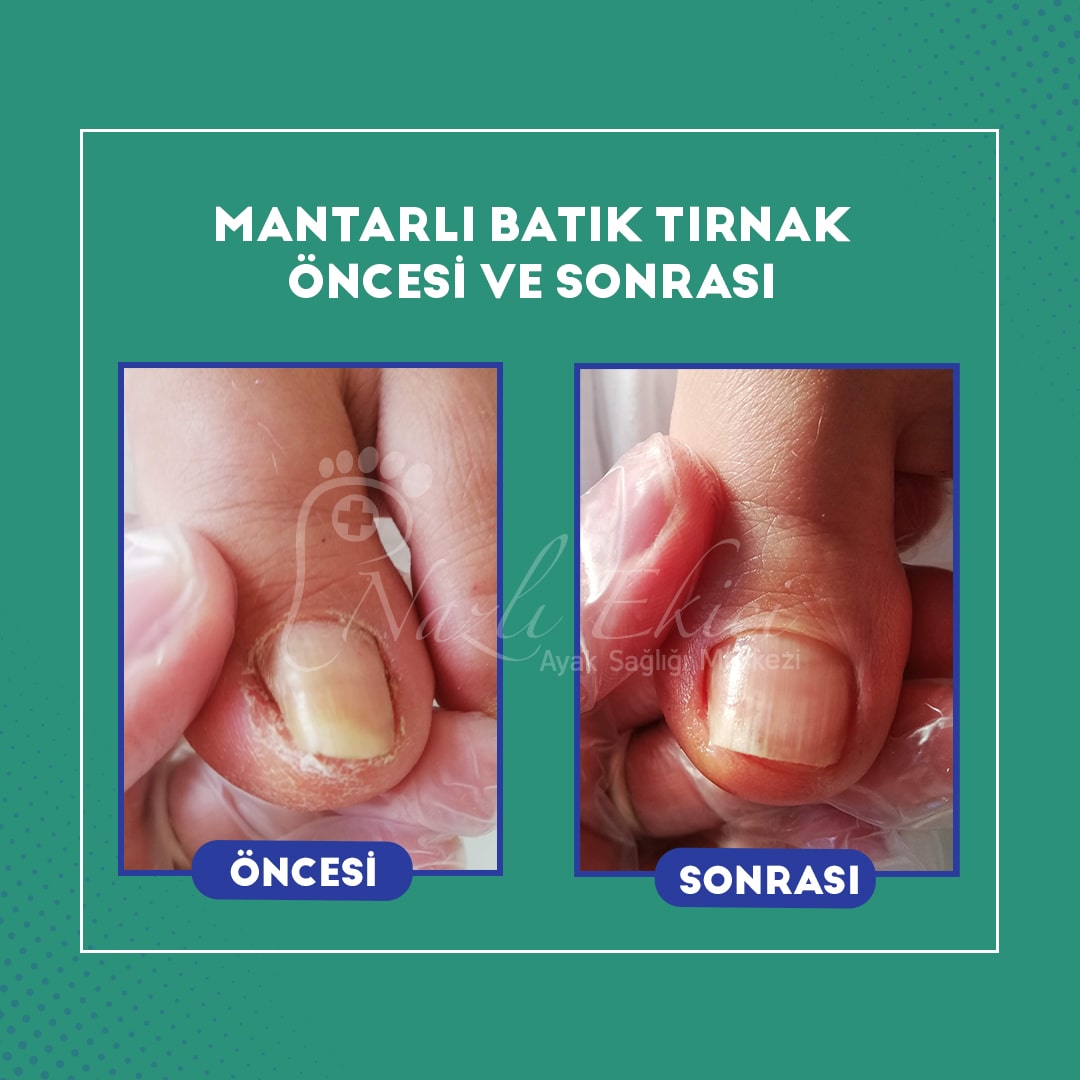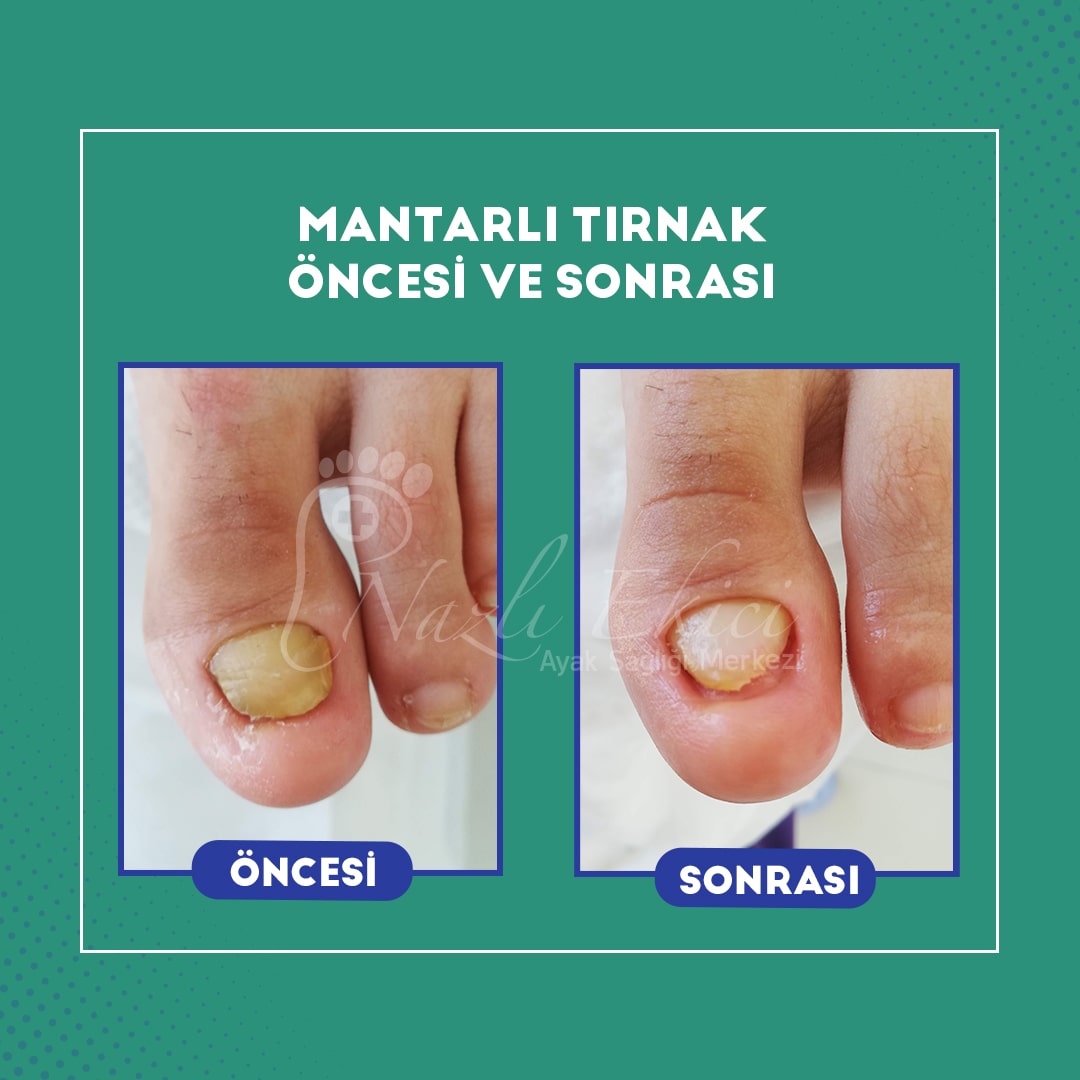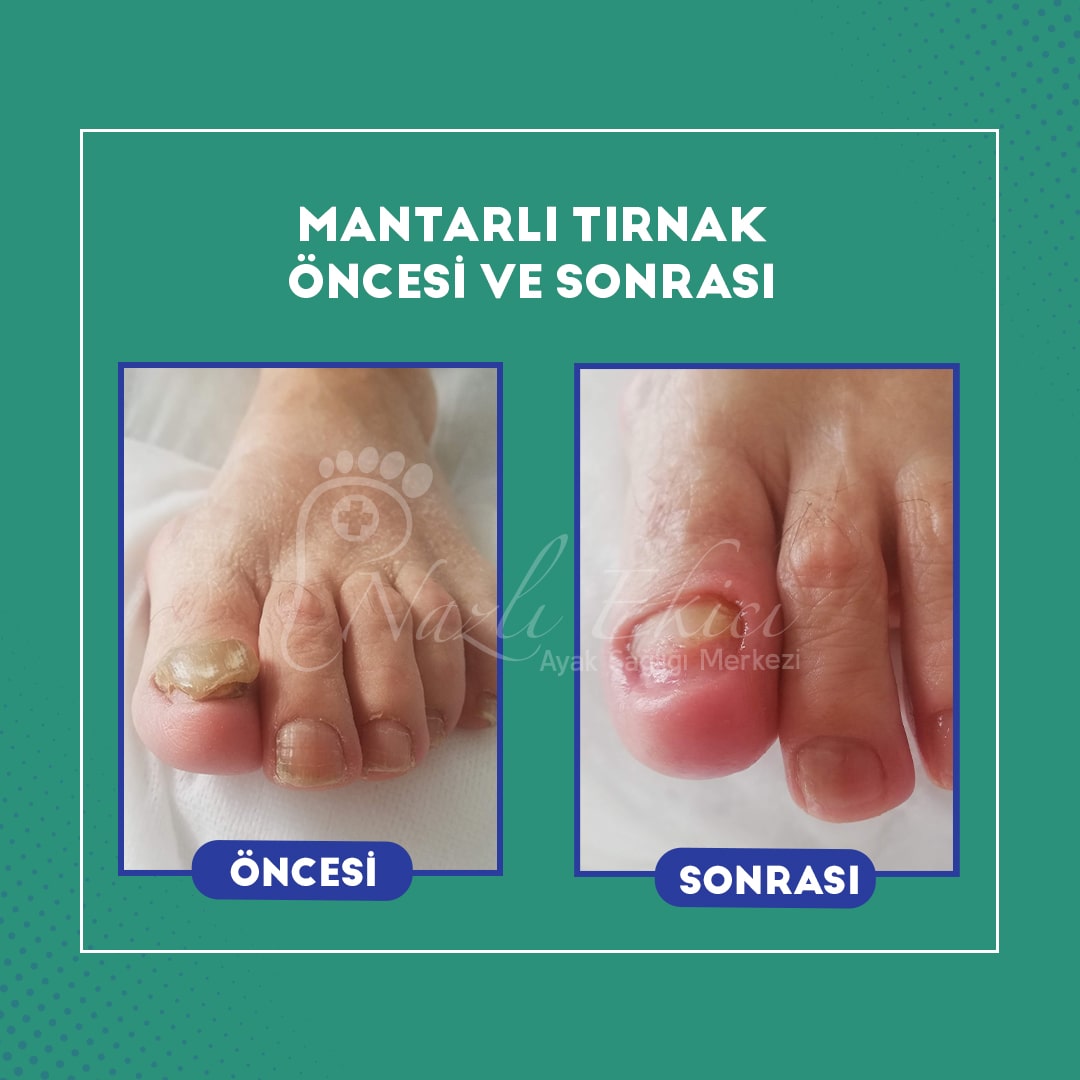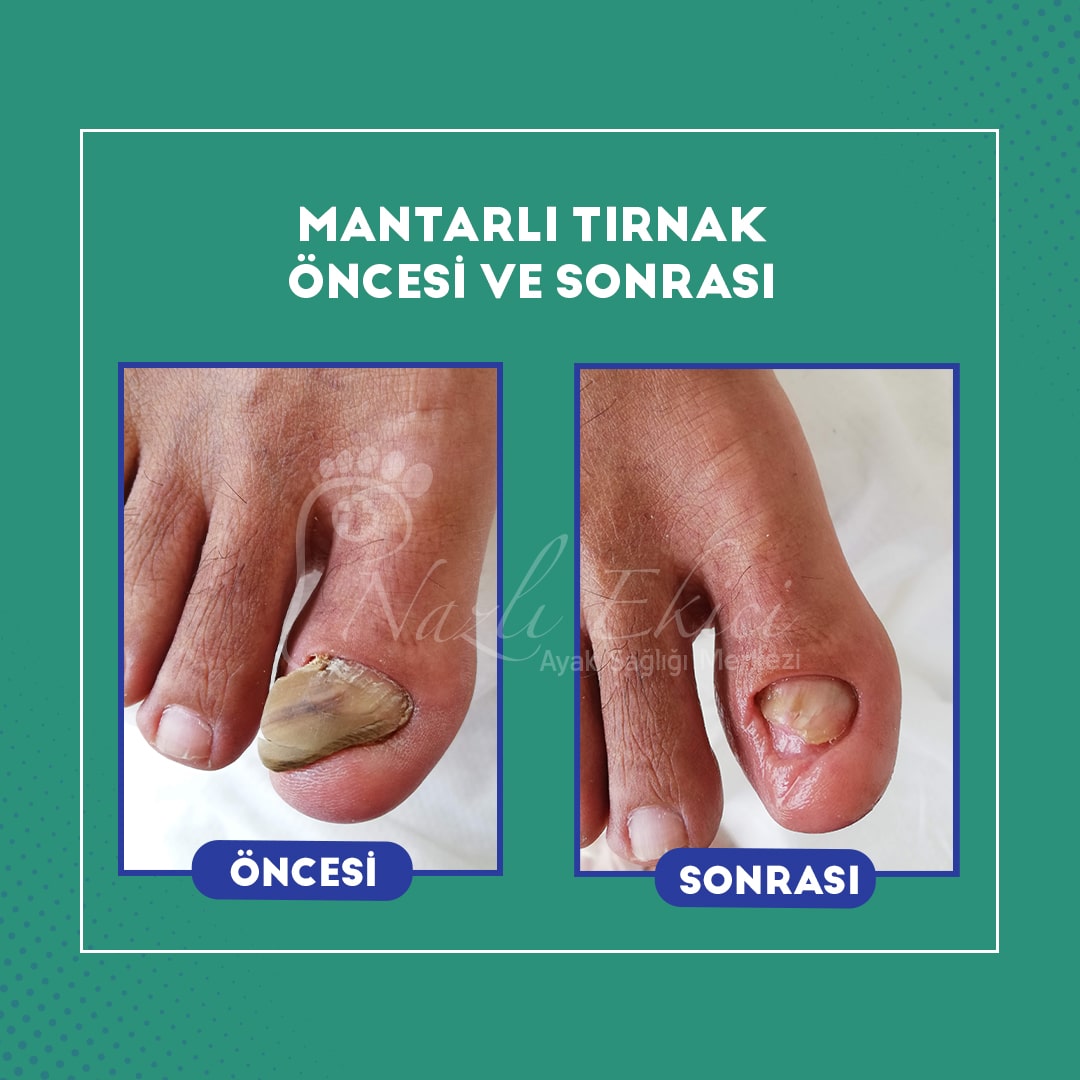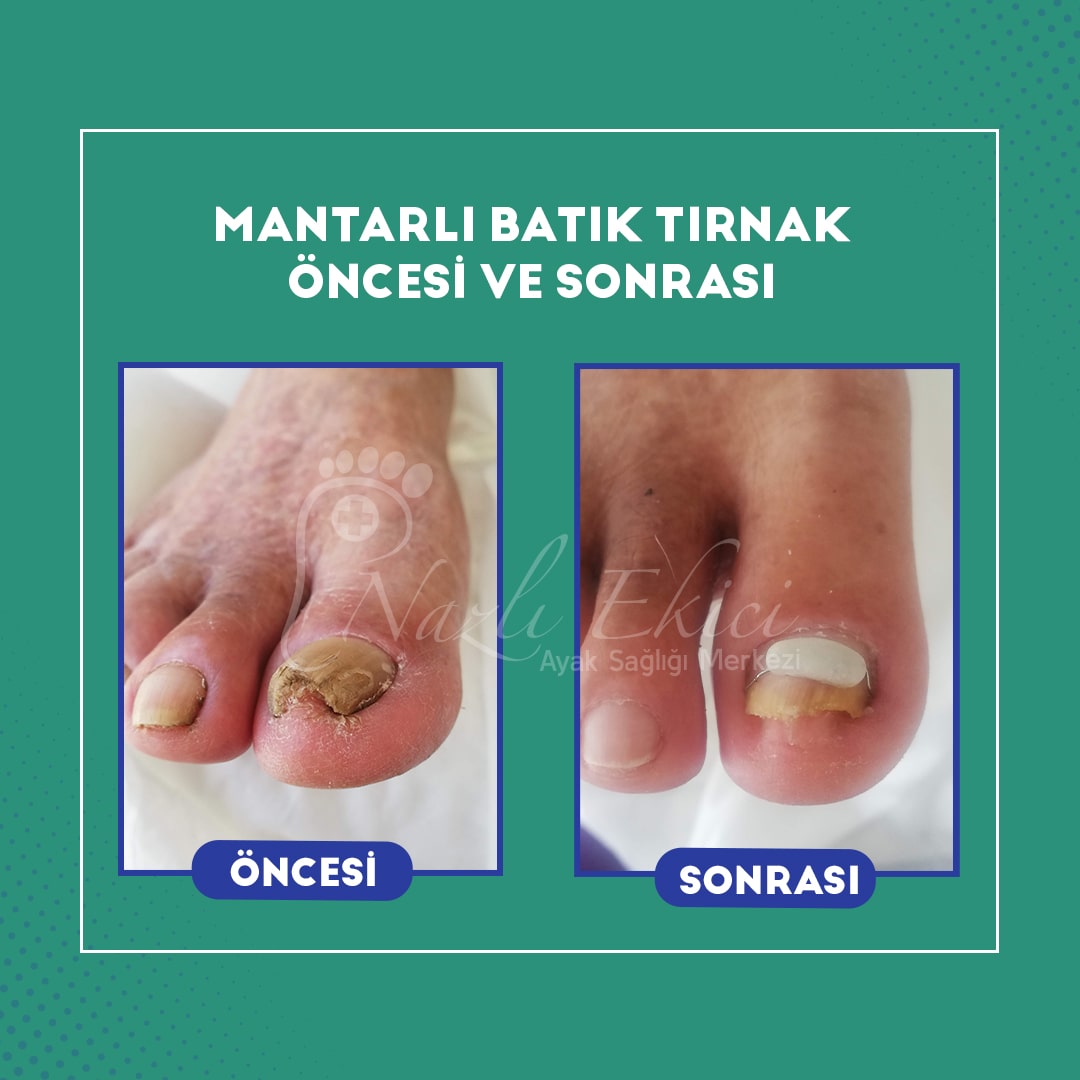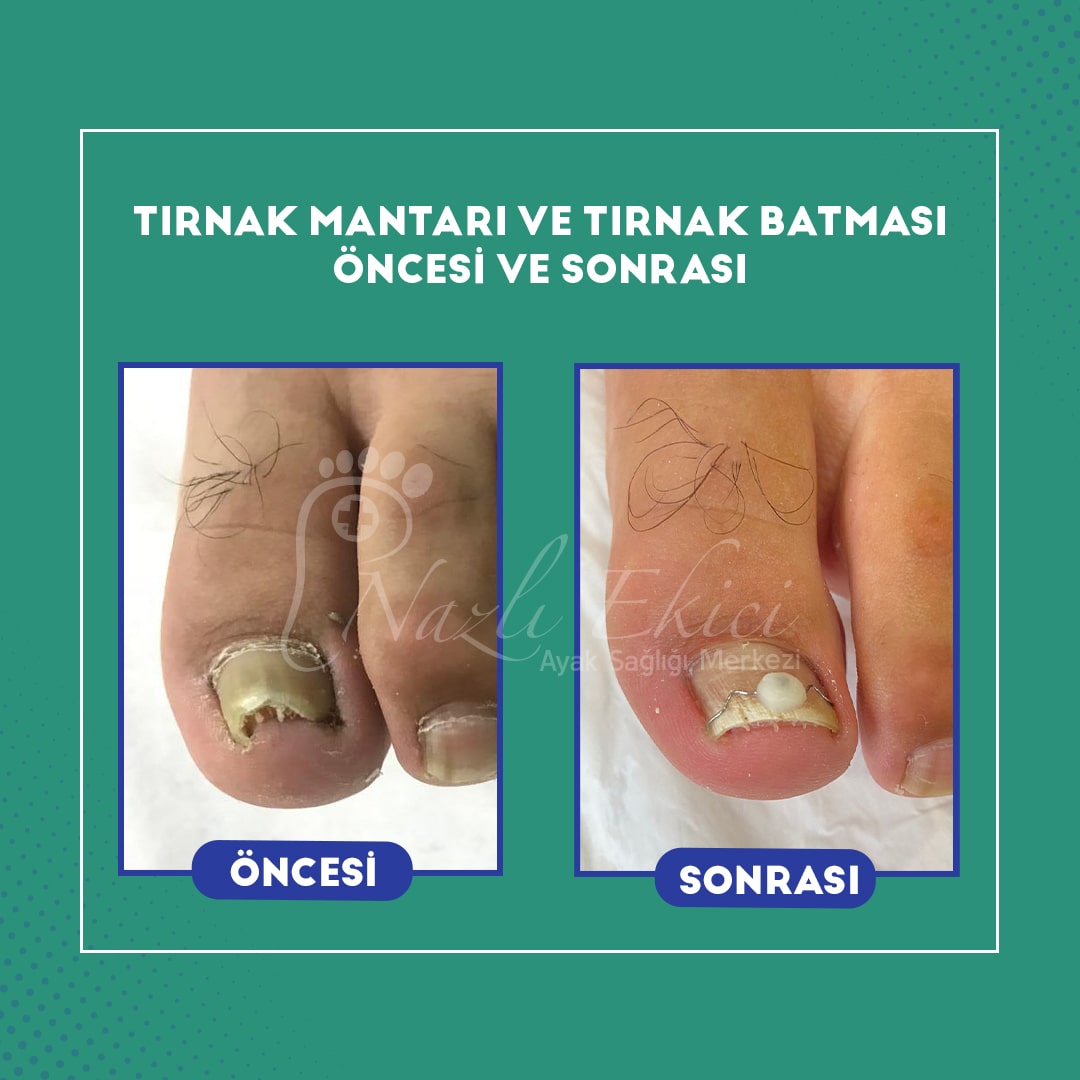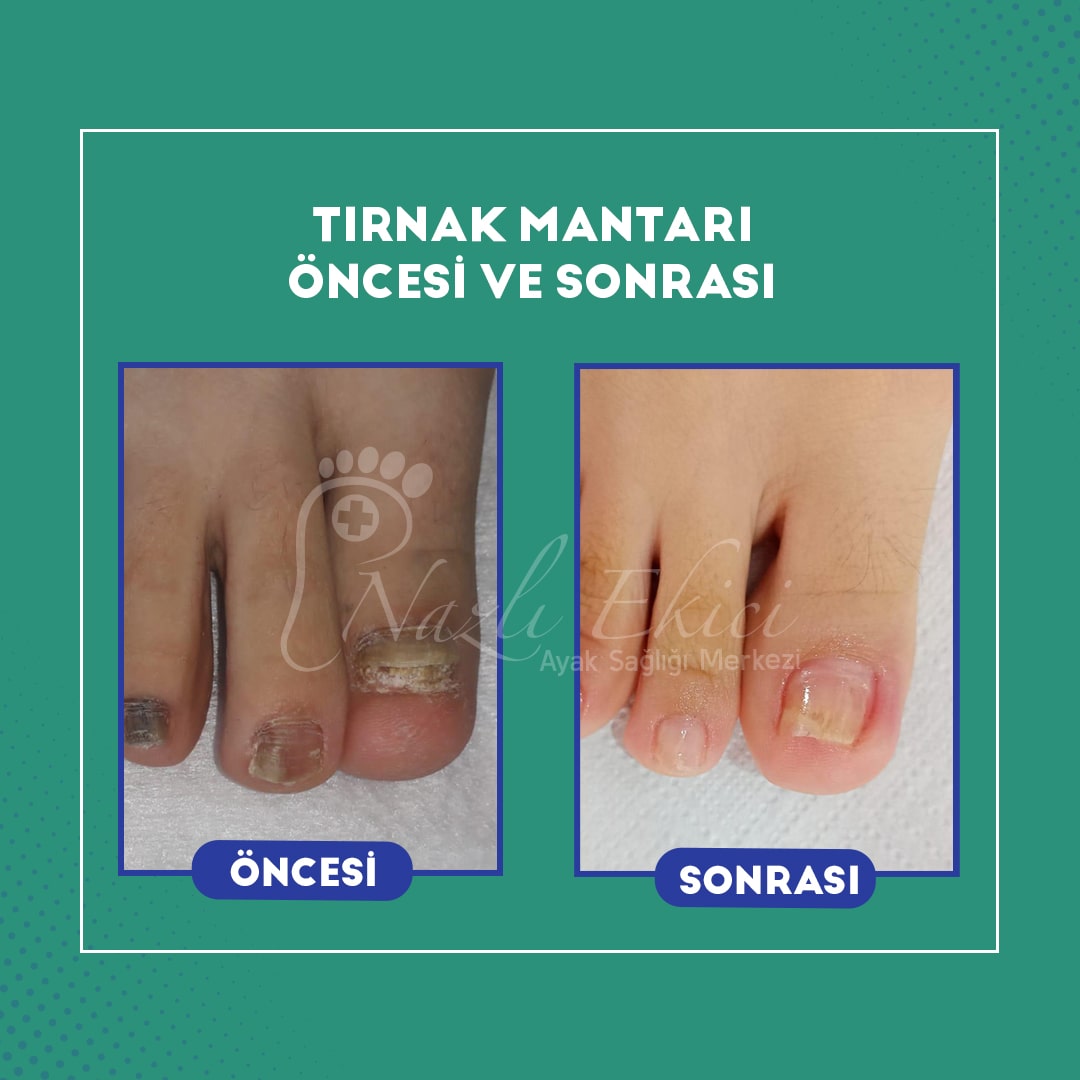Nail Fungus
FUNGUS- ONICOMYCOSIS
Fungal bacteria (viruses) reside in our bodies as passive spores. When our local or overall immune system is compromised, they become active and manifest on the skin and nails. In addition to these, the most significant causes of skin and nail fungus are wet feet, wearing tight shoes/socks, and impact sports. When the feet are damaged during sports such as football, tennis, or climbing, they may have under nail discharge, discoloration, and thickness. When any of these symptoms arise, your nail is infected with fungus.
TREATMENT OF TOENAIL FUNGUS
In order to eliminate this infection, which we contracted instantaneously and in a very short period of time, it is important to wait until the nail has grown to the free end of the matrix. Healthy nail growth ranges from 1 to 3 cm per month. The duration of treatment can last between six months and one year. During the treatment, the nail must be cleaned and thinned using medical devices, and meanwhile, the matrix (which is the location of nail formation) must be activated and supported with locally administered laser-based solutions. Without these procedures, oral medications and any local solution would be ineffective and will not result in a full recovery. There are 250,000 different types of fungus.
FUNGAL SKIN INFECTION
In the case of skin fungus, the infection under the tissue must be removed. After foot detox and medical cleaning, it is important to reinforce this with fungal cream. The fungus on the skin heals more quickly. Between the ages of 12 and 22 (adolescence), the body experiences excessive sweating. In order to prevent foot sweating regularly, it is necessary to use a powder that will not dry the skin or restrict sweating but will eliminate the damage caused by sweat. Similarly, the usage of insoles and slippers is essential and should be supported in the same manner.






